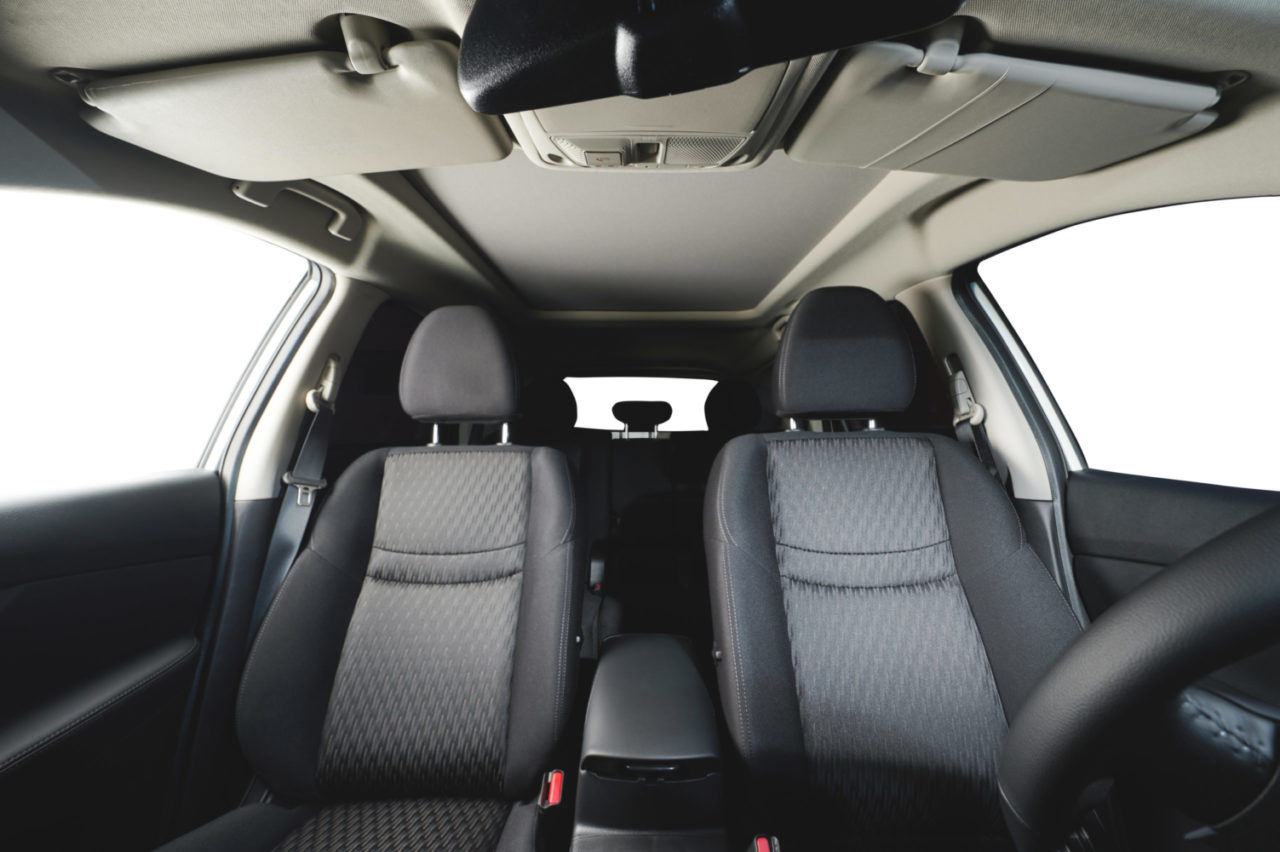
What is a headliner?
Headliners are made of composite fabrics, a combination of different materials with different functionalities. The composite parts are adhered to the roof of the car and help to improve the interior appeal as well as provide an element of insulation against heat and noise.
A typical headliner consists of multiple layers: a face side, a rigid core in the center, and a backing. The different layers consist of a multitude of materials such as knit or non-woven fabric, rigid foam, reinforcement material, etc. Liquid and dry adhesives (film, web, net) are then used to bond the different layers together in order to enhance the headliner’s unique shape and contours.
What is the function of headliner ?
The multi-layered headliners bring together various functionalities:
- better look and comfort through soft touch
- stiffness of the roof
- absorption of excess noise from the outside
- insulation against heat and cold, regulation of internal temperature
- improved acoustics for audio systems
What are the special requirements for headliner lamination ?
Compared to other interior parts of the car, headliners are much more likely to deviate from their original position due to their weight. The headliner can delaminate and eventually fall off after a period of poor handling or lack of care. This not only leads to a degradation of aesthetic value and comfort but also to declined safety and insulation of the car.
To ensure the headliner’s durability, the right choice of adhesive is very important. Heat, humidity, and time can significantly degrade the bonding strength of the adhesive and the different layers become less resistant and brittle.
Notably hot melt adhesives for dry lamination offer a good and clean alternative compared to liquid adhesives. Between the different layers, the Thermo adhesive can serve as barrier film and bonding, especially in the wet process, and they can be directly applied in the dry process for both the face and core sides.
Hot melt adhesives not only provide an efficient bonding and backing, but also an eco-friendly, sustainable and low VOC solution for headlining.
Do you want to know more about hot melt adhesives for automotive applications? Then have a look at our Protechnic adhesive products Linkhttps://www.protechnic.fr/probond-hotmelt-adhesive-bonding-in-a-sustainable-way/ or contact our expert team for more information.

